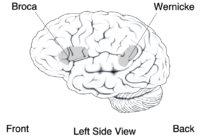
The dual-active histamine H3 receptor antagonist and acetylcholine esterase inhibitor E100 ameliorates stereotyped repetitive behavior and neuroinflammation in sodium valproate induced autism in mice.
Sign Up to like & getrecommendations! Published in 2019 at "Chemico-biological interactions"
DOI: 10.1016/j.cbi.2019.108775
Abstract: Postnatal exposure to valproic acid (VPA) in rodents induces autism-like neurobehavioral defects which are comparable to the motor and cognitive deficits observed in humans with autism spectrum disorder (ASD). Histamine H3 receptor (H3R) and acetylcholine… read more here.
Keywords: acetylcholine esterase; repetitive behavior; autism; dual active ... See more keywords

Reduction of repetitive behavior by co-administration of adenosine receptor agonists in C58 mice
Sign Up to like & getrecommendations! Published in 2019 at "Pharmacology Biochemistry and Behavior"
DOI: 10.1016/j.pbb.2019.04.006
Abstract: Repetitive behaviors are diagnostic for autism spectrum disorder (ASD) and commonly observed in other neurodevelopmental disorders. Currently, there are no effective pharmacological treatments for repetitive behavior in these clinical conditions. This is due to the… read more here.
Keywords: combination; repetitive behavior; receptor agonists; adenosine ... See more keywords

Pain perception and physiological correlates in body-focused repetitive behavior disorders
Sign Up to like & getrecommendations! Published in 2022 at "CNS Spectrums"
DOI: 10.1017/s1092852922000062
Abstract: Abstract Background Behaviors typical of body-focused repetitive behavior disorders such as trichotillomania (TTM) and skin-picking disorder (SPD) are often associated with pleasure or relief, and with little or no physical pain, suggesting aberrant pain perception.… read more here.
Keywords: body focused; pain perception; pain; focused repetitive ... See more keywords

The Development, Reliability, and Validity of the Social Impact of Repetitive Behavior Scale in Children with Autism Spectrum Disorder
Sign Up to like & getrecommendations! Published in 2020 at "Journal of Mental Health Research in Intellectual Disabilities"
DOI: 10.1080/19315864.2020.1725695
Abstract: ABSTRACT Introduction: Current measures of restrictive and repetitive behavior (RRB) in people with autism focus on severity and intensity and, to some degree, the global interference of the behavior. In this study we developed the… read more here.
Keywords: social impact; repetitive behavior; impact repetitive; reliability ... See more keywords

Subthalamic nucleus pathology contributes to repetitive behavior expression and is reversed by environmental enrichment
Sign Up to like & getrecommendations! Published in 2018 at "Genes"
DOI: 10.1111/gbb.12468
Abstract: Repetitive motor behaviors are common in neurodevelopmental, psychiatric and neurological disorders. Despite their prevalence in certain clinical populations, our understanding of the neurobiological cause of repetitive behavior is lacking. Likewise, not knowing the pathophysiology has… read more here.
Keywords: repetitive behavior; pathology; expression; environmental enrichment ... See more keywords

The Executive Function Account of Repetitive Behavior: Evidence From Rubinstein-Taybi Syndrome.
Sign Up to like & getrecommendations! Published in 2022 at "American journal on intellectual and developmental disabilities"
DOI: 10.1352/1944-7558-128.1.49
Abstract: In this study, we focus on Rubinstein-Taybi syndrome (RTS) to explore the associations between executive function deficits and repetitive behaviors. Thirty individuals with RTS completed direct assessments of inhibition, working memory and set-shifting. Informants completed… read more here.
Keywords: function; rubinstein taybi; executive function; taybi syndrome ... See more keywords